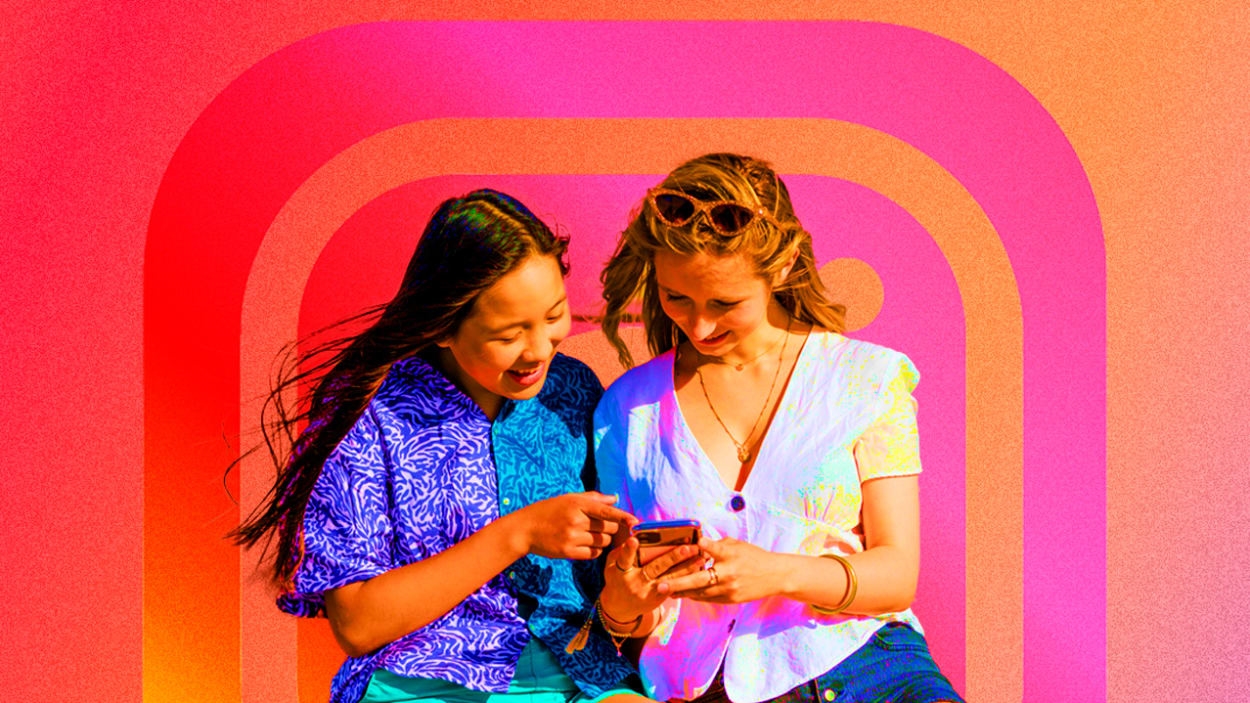A new study suggests teenagers who use Instagram are happier than we think
Anxiety stemming from the use of social media has become a common trope as we spend more and more of our lives online, with big tech platforms pinpointed as to blame.
And yet a new study out of the Netherlands suggests that the situation may be more nuanced than we first thought, at least when it comes to Instagram.
Research by academics at the University of Amsterdam’s School of Communication Research looks at more than 210,000 Instagram direct messages belonging to around 100 adolescents in the eighth and ninth grade. The contents of their DMs were analyzed to discern whether the participants expressed positive or negative sentiment; study subjects were also asked to complete a dozen biweekly surveys asking how happy they felt in the previous seven days.
The result: Teens sent DMs containing expressions of happiness four times more frequently than sad ones, while there was no significant relationship between the emotions expressed in a user’s DMs and how they felt IRL.
“All the headlines you see in newspapers, and the stuff we’ve done previously, looks a lot at time spent on social media and not at the content you consume,” says Tim Verbeij, one of the coauthors of the paper. Verbeij and his colleagues’ paper does something different, looking at the actual content that users encounter while on social media, rather than simply investigating the link between time spent on a platform and their well-being and happiness.
Verbeij says that the findings are notable. “Our interpretation of the findings is that Instagram can be beneficial for normal emotional development,” he says. In part, that could be down to the timeframe in which the experiment was conducted: Starting in November 2019, the surveys spanned the pandemic, meaning that for some users caught in strict government-enforced lockdowns, social media was a way to stay connected to friends when they couldn’t meet in person. “In this case, Instagram might be very beneficial for them to express their happiness or when they’re sad, with their friends,” he says.
Nevertheless, Verbeij didn’t expect to find that Instagram would be positively associated with well-being. “I think [teenagers] are better at managing their social media use than we maybe expect,” says Verbeij. “Of course they can spend a lot of time on social media and it can interrupt them doing their homework—but it also really helps them to communicate with their peers.”
That’s a significant addition to our understanding of how teenagers interact with social media—and in their own voice, too. “This is an important paper in large part because it focuses on DMs via data donation of adolescents’ own archives which allows a meaningful window into non-public social media spaces of young people,” says Tama Leaver, professor of internet studies at Curtin University in Australia, and the coauthor of an academic book on Instagram. (Leaver was not affiliated with the University of Amsterdam study.) “Non-public spaces are less studied quantitively simply because access is harder to get, so the data donation model is an important way of opening those spaces to researchers.”
Leaver also believes that the findings are “a useful corrective to the wide sense at the moment that most social media is bad most of the time.” Teenagers expressing more happiness than sadness is comparatively counterintuitive, says Leaver. “This work certainly suggests this social media space is largely a positive one.”
That finding that social media can be positive contradicts several studies, including a 2021 analysis by Harvard University researchers that the use of certain social media platforms, like Snapchat, Facebook, and TikTok, preceded the worsening of depressive symptoms among more than 5,000 users. In 2019, Fast Company even ran an opinion piece by a sociologist titled “Yes, social media is making you miserable”. There are, of course, a number of—sometimes grim—red flags around the use of the world’s favorite platforms.
It’s undeniable that for many teenagers, social media is a pressure cooker of anxiety that can have real-world ramifications. The U.K. is currently debating an Online Safety Bill that has in recent months been overhauled because of campaigning by the father of Molly Russell, a British teenager whom a coroner ruled in September killed herself because she consumed harmful online content. Russell was shown content relating to self-harm, depression, and suicide on Instagram and Pinterest in the weeks and months leading up to her death.
“Online harms to children, like eating disorder content, self-harm, and suicide content, have real-world impacts on our communities,” says Imran Ahmed, chief executive officer of the Center for Countering Digital Hate, a nonprofit focusing on social media and the internet.
Yet it’s also, increasingly, a key part of growing up in a world online. “For me personally, I would say that social media is really becoming part of normal emotional development for adolescents,” says Verbeij. “Of course it can also be detrimental, but that’s how I look at it.”
(12)



